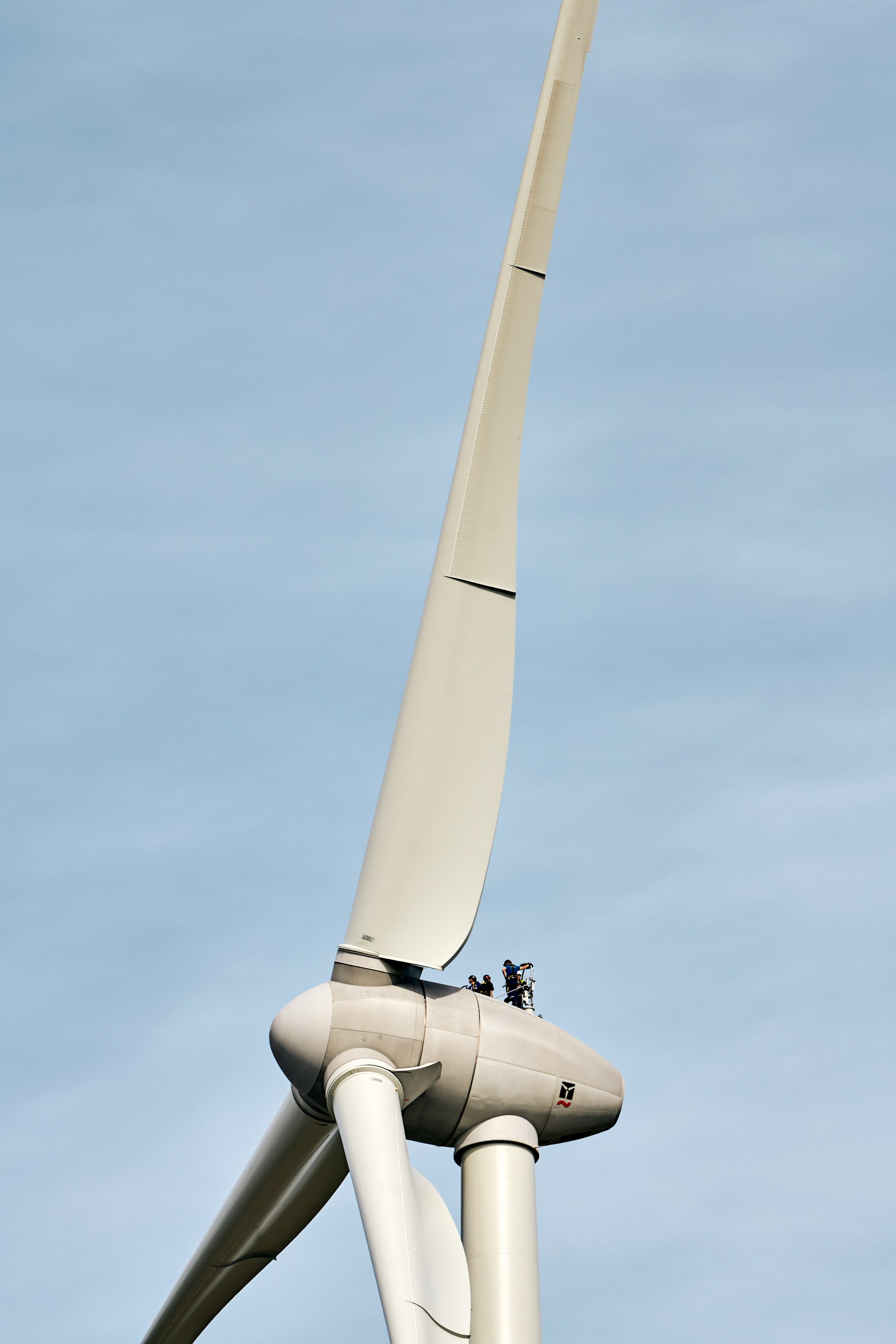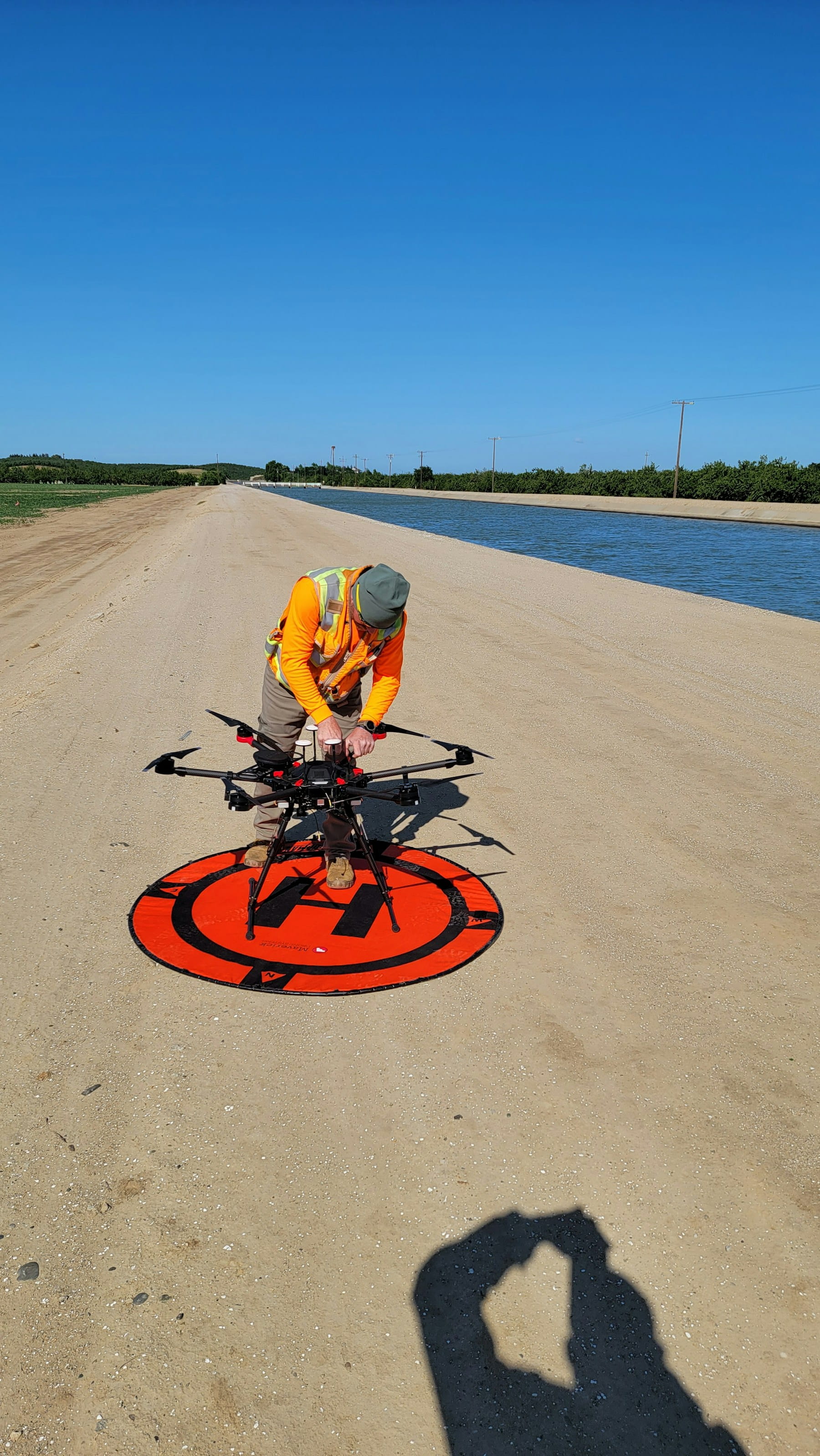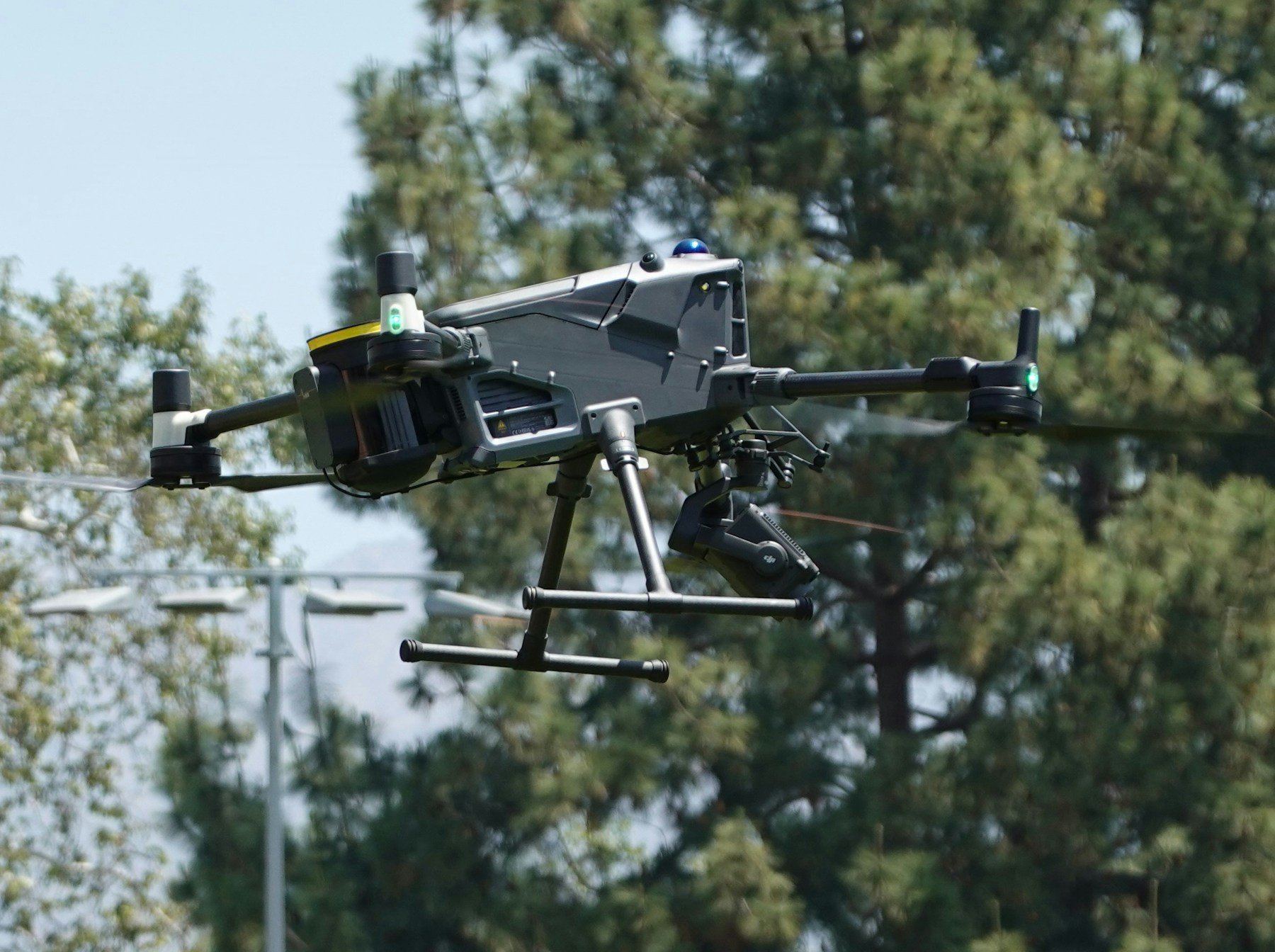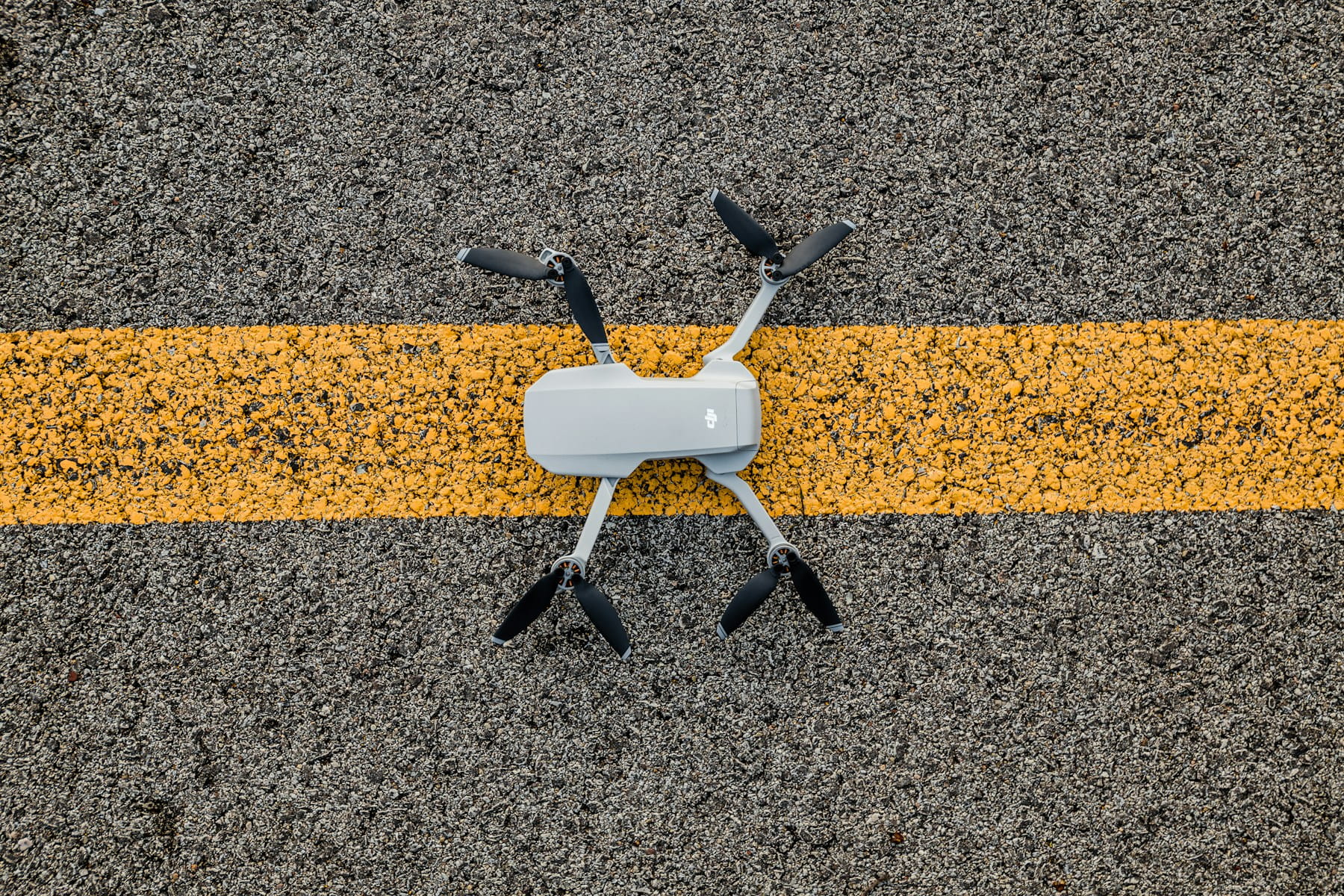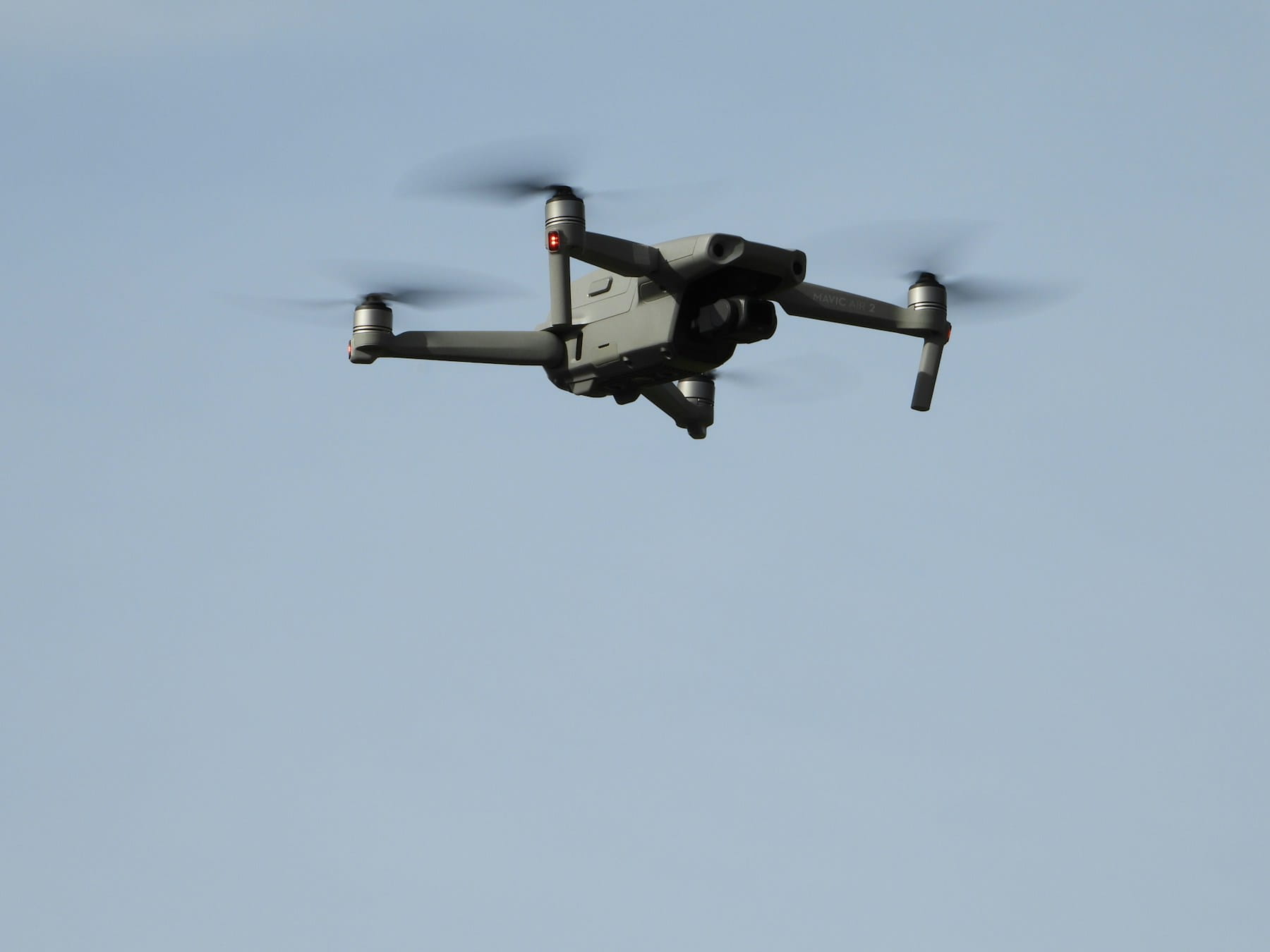Drone technology revolutionizes wind turbine inspections by enhancing safety, reducing costs, and providing detailed visual and thermal data for proactive maintenance and improved operational efficiency.
Wind energy represents one of the fastest-growing segments in renewable power generation, with turbines reaching heights of over 400 feet and blade diameters spanning more than 350 feet. These massive structures require regular maintenance and inspection to operate efficiently, but traditional methods present significant challenges. Climbing these towering giants puts workers at risk, takes considerable time, and often results in incomplete assessments of hard-to-reach areas.
Professional drone technology has transformed how operators approach wind turbine maintenance. These aerial platforms can reach every part of a turbine safely, capture detailed visual and thermal data, and complete inspections in a fraction of the time required by conventional methods. The shift from manual to drone-based inspections represents more than just a technological upgrade—it fundamentally changes how wind farm operators manage their assets.
Table of contents
- How drone inspections work for wind turbines
- Key drone technologies for turbine inspection
- Operational advantages of drone-based inspections
- Types of wind turbine inspections using drones
- Inspection capabilities and detection methods
- Professional drone platforms for wind turbine work
- Specialized cameras and sensors
- Planning and executing drone turbine inspections
- Data analysis and reporting workflows
- Regulatory considerations for turbine inspections
- Cost analysis and ROI factors
- Future developments in drone inspection technology
How drone inspections work for wind turbines
Drone-based wind turbine inspections follow a systematic approach that combines flight planning, data collection, and analysis. Operators begin by conducting site surveys to identify potential hazards, wind conditions, and flight restrictions. This preparation phase includes reviewing turbine specifications, maintenance history, and any known issues that require focused attention.
The actual inspection involves flying predetermined flight paths around each turbine component. Pilots maintain safe distances while positioning cameras and sensors to capture detailed imagery of blades, nacelles, towers, and other structural elements. Modern drones can automatically adjust their flight patterns based on wind conditions and maintain stable positioning even in challenging environments.
Data collection occurs simultaneously with flight operations. High-resolution cameras capture surface details, while thermal sensors detect temperature variations that might indicate mechanical problems. Some platforms can collect both visual and thermal data simultaneously, providing comprehensive information about turbine condition without requiring multiple flights.
Post-flight processing involves analyzing captured data, identifying potential issues, and generating reports for maintenance teams. Specialized software can automatically detect certain types of damage, though human expertise remains valuable for interpreting complex findings and making maintenance recommendations.
Key drone technologies for turbine inspection
Several technological components make drones particularly effective for wind turbine inspections. Obstacle avoidance systems help prevent collisions with turbine structures, guy wires, and other equipment. These systems use multiple sensors to create real-time maps of the surrounding environment and automatically adjust flight paths when obstacles are detected.
GPS and positioning systems provide precise location data that allows for repeatable inspections and accurate mapping of identified issues. RTK (Real-Time Kinematic) GPS systems can achieve centimeter-level accuracy, making it possible to return to exact locations for follow-up inspections or maintenance work.
Gimbal-stabilized cameras maintain steady imagery even in windy conditions. Three-axis gimbals can compensate for drone movement in multiple directions, resulting in sharp photos and smooth video footage regardless of flight conditions. This stability proves particularly important when conducting detailed inspections of specific turbine components.
Long-range transmission systems allow operators to maintain control and receive live video feeds from distances of several kilometers. This capability enables inspections of offshore wind farms or remote installations where operators must maintain safe distances from turbine structures.
Weather resistance features protect drone components from moisture, dust, and temperature extremes commonly encountered at wind farm locations. IP ratings indicate the level of environmental protection, with higher ratings suitable for operations in challenging weather conditions.
Operational advantages of drone-based inspections
Safety improvements represent the most significant advantage of drone inspections. Traditional turbine inspections require workers to climb towers using rope access techniques or bucket trucks, exposing them to fall risks and other hazards. Drone operations keep all personnel on the ground, eliminating the primary safety concerns associated with turbine maintenance.
Time efficiency gains are substantial compared to manual inspection methods. A single drone can inspect multiple turbines in the time it takes a climbing team to assess one unit. This speed advantage becomes particularly valuable for large wind farms with dozens or hundreds of turbines requiring regular monitoring.
Cost reductions occur across multiple areas. Labor costs decrease due to smaller crew requirements and faster inspection times. Equipment costs are lower since drones eliminate the need for specialized climbing gear, scaffolding, or bucket trucks. Transportation costs also decrease because drone teams require fewer vehicles and personnel for mobilization.
Access to difficult areas improves significantly with drone technology. Blade tips, undersides of nacelles, and tower sections that are challenging to reach manually can be easily inspected from multiple angles. This comprehensive access leads to more thorough assessments and better maintenance decisions.
Weather flexibility allows inspections to proceed under conditions that might halt manual operations. Many professional drones can operate in moderate wind speeds and light precipitation, maintaining inspection schedules that would otherwise face delays.
Data quality improvements result from consistent positioning, lighting, and imaging parameters. Drone cameras can capture imagery from identical locations during each inspection, making it easier to track changes over time and identify developing issues before they become serious problems.
Types of wind turbine inspections using drones
Structural inspections focus on the overall integrity of turbine components. These assessments complement broader asset inspection applications across industrial infrastructure. Wind turbine examinations look for tower cracks, corrosion, or deformation that might affect structural stability. Foundation inspections check for settling, cracking, or erosion around turbine bases. Connection points between tower sections receive particular attention since these areas experience high stress loads.
Blade inspections represent the most common application of drone technology in wind turbine maintenance. These examinations look for surface damage, erosion, cracks, and delamination that can affect aerodynamic performance. Leading edge erosion is particularly important since it can significantly reduce energy production if left untreated.
Internal blade inspections use specialized equipment to examine the interior structure of turbine blades. While less common, these inspections can identify internal damage, moisture intrusion, or structural issues not visible from the outside. Some operators use crawler-type devices that move through blade interiors while others employ drones specifically designed for confined space operations.
Nacelle inspections examine the housing that contains the turbine's main components. These assessments look for housing damage, ventilation issues, and external signs of internal mechanical problems. Thermal imaging proves particularly useful for nacelle inspections since it can detect heat signatures that indicate bearing problems, electrical issues, or cooling system failures.
Electrical system inspections focus on external electrical components, connections, and wiring. While most electrical equipment is enclosed, drones can identify external signs of electrical problems such as corona discharge, overheating components, or physical damage to electrical enclosures.
Environmental monitoring uses drones to assess the impact of wind farm operations on surrounding ecosystems. These inspections might document wildlife interactions, vegetation changes, or erosion patterns that could affect regulatory compliance or operational permits.
Inspection capabilities and detection methods
Visual inspection capabilities allow drones to identify surface damage, wear patterns, and structural issues through high-resolution photography. Modern camera systems can capture details as small as hairline cracks or minor surface defects that might be missed during ground-based visual inspections.
Thermal imaging detects temperature variations that often indicate mechanical problems before they become visible or cause operational failures. Overheating bearings, electrical connections, or brake systems generate heat signatures that thermal cameras can identify from safe distances.
LiDAR scanning creates precise three-dimensional models of turbine structures, allowing operators to measure deformations, track changes over time, and create detailed records of turbine geometry. These scans can detect minute changes in turbine alignment or structural shape that might affect performance.
Multispectral imaging analyzes reflected light across different wavelengths to identify material properties or detect issues not visible to standard cameras. This technology can identify different types of surface coatings, detect corrosion beneath paint layers, or assess the condition of composite materials used in blade construction.
Acoustic monitoring uses sensitive microphones to detect unusual sounds that might indicate mechanical problems. Bearing noise, blade whistling, or other acoustic signatures can provide early warning of developing issues.
Vibration analysis employs specialized sensors to measure turbine movement patterns and identify abnormal vibrations that might indicate imbalance, misalignment, or component wear.
Professional drone platforms for wind turbine work
Industrial-grade quadcopters offer stable flight performance and can carry multiple sensors simultaneously. These platforms typically feature redundant systems for safety, long flight times for extended inspections, and weather-resistant construction suitable for outdoor operations.
Fixed-wing drones excel at covering large wind farm areas efficiently and can carry sophisticated sensor packages over long distances. Their extended flight times make them suitable for comprehensive site surveys and large-scale monitoring applications.
Hybrid VTOL (Vertical Take-Off and Landing) platforms combine the hovering capability of quadcopters with the efficiency of fixed-wing aircraft. These systems can take off and land in confined spaces while providing extended flight times for comprehensive inspections.
Autonomous inspection systems can conduct pre-programmed flights with minimal human intervention. These platforms use GPS waypoints and obstacle avoidance systems to follow consistent flight paths, ensuring repeatable data collection and reducing operator workload.
Specialized turbine drones are designed specifically for wind turbine inspections, with features like extended flight times, specialized mounting systems for turbine-specific sensors, and software integration designed for wind energy applications.
Specialized cameras and sensors
High-resolution visible light cameras provide detailed surface imagery suitable for identifying physical damage, wear patterns, and structural issues. Modern cameras offer resolutions exceeding 20 megapixels with optical zoom capabilities for detailed close-up inspections.
Thermal infrared cameras detect temperature variations that indicate mechanical problems, electrical issues, or structural defects. These sensors can identify problems before they become visible or cause operational failures, making them valuable for predictive maintenance programs.
Multispectral cameras capture imagery across multiple wavelengths simultaneously, providing information about material properties and surface conditions not visible to standard cameras. These sensors can detect corrosion, coating failures, or material degradation.
LiDAR sensors create precise three-dimensional maps of turbine structures, allowing operators to measure deformations, track changes over time, and create detailed geometric records. Point cloud data from LiDAR scans can detect changes as small as a few millimeters.
Zoom cameras with optical magnification capabilities allow detailed inspection of specific turbine components from safe distances. High-quality zoom lenses can resolve fine details on blade surfaces or electrical components without requiring close approaches to turbine structures.
Night vision systems enable inspections during low-light conditions or at night when wind speeds might be more favorable. These systems can identify issues that are difficult to see during daylight hours or allow 24-hour inspection capabilities.
Planning and executing drone turbine inspections
Pre-flight planning begins with site assessment and hazard identification. Comprehensive risk assessment procedures help identify and mitigate hazards specific to wind farm environments. Operators must evaluate wind conditions, identify potential obstacles, and determine appropriate flight paths for each turbine. This planning phase includes reviewing NOTAMs (Notice to Airmen), checking weather forecasts, and confirming regulatory compliance.
Flight path development involves creating efficient routes that provide comprehensive coverage while maintaining safe distances from turbine structures. Professional mission planning becomes critical when coordinating complex wind turbine operations. Automated flight planning software can generate optimized paths based on turbine specifications, wind conditions, and inspection requirements.
Crew coordination becomes particularly important for wind farm inspections since multiple personnel may be involved in data collection, equipment management, and safety oversight. Clear communication protocols help ensure safe and efficient operations.
Weather monitoring continues throughout inspection operations since wind conditions can change rapidly at turbine sites. Operators must be prepared to adjust flight plans or suspend operations if conditions exceed safe operating parameters.
Equipment preparation includes checking drone systems, cameras, batteries, and support equipment before beginning inspections. Backup equipment should be available since wind farm locations are often remote and equipment failures can delay operations.
Data management procedures ensure that collected information is properly organized, backed up, and made available for analysis. Large inspection projects can generate significant amounts of data that must be systematically managed to be useful.
Data analysis and reporting workflows
Image processing software analyzes collected photos and videos to identify potential issues, measure damage, and track changes over time. Automated analysis tools can flag areas requiring human attention, reducing the time needed for manual review.
Thermal data interpretation requires specialized expertise to distinguish between normal temperature variations and indicators of mechanical problems. Software tools can help identify temperature anomalies, but human expertise remains important for accurate diagnosis.
3D modeling creates detailed representations of turbine structures from collected imagery or LiDAR data. These models can be used for measurement, change detection, and planning maintenance activities.
Damage classification systems categorize identified issues by severity, type, and required response. Standardized classification schemes help maintenance teams prioritize repairs and track turbine condition trends.
Report generation tools compile inspection findings into formats suitable for maintenance planning, regulatory compliance, and management reporting. Automated reporting systems can generate consistent documentation while reducing manual work requirements.
Trend analysis compares current inspection results with historical data to identify patterns, track deterioration rates, and predict future maintenance needs. This analysis supports predictive maintenance strategies and helps optimize maintenance schedules.
Regulatory considerations for turbine inspections
Airspace restrictions around wind farms may limit drone operations, particularly near airports or in controlled airspace. Operators must coordinate with air traffic control when necessary and follow all applicable airspace regulations.
Part 107 regulations in the United States govern commercial drone operations and include requirements for pilot certification, aircraft registration, and operational limitations. Wind turbine inspections must comply with these regulations unless specific waivers are obtained.
Beyond visual line of sight (BVLOS) operations may be necessary for large wind farms or offshore installations. These operations require special authorization and additional safety measures beyond standard commercial drone regulations.
International operations face different regulatory requirements depending on the country and specific location. Operators must research and comply with local regulations for each inspection site.
Insurance requirements for commercial drone operations may include specific coverage for wind energy applications. Some insurance policies require additional certifications or operational procedures for high-value industrial sites.
Documentation requirements include maintaining flight logs, pilot certifications, and equipment records as required by applicable regulations. Proper documentation helps ensure compliance and supports safety management systems.
Cost analysis and ROI factors
Equipment costs for professional drone systems suitable for wind turbine inspections typically range from tens of thousands to over one hundred thousand dollars depending on platform capabilities and sensor requirements. These costs must be compared to the ongoing expenses of traditional inspection methods.
Personnel costs differ significantly between drone and traditional inspection methods. Drone operations typically require fewer specialized personnel and can complete inspections faster, reducing labor costs per turbine.
Operational costs include transportation, accommodation, and equipment maintenance for inspection teams. Drone teams often have lower operational costs due to reduced crew size and equipment requirements.
Maintenance cost savings result from more frequent inspections that identify issues before they become serious problems. Early detection of blade damage, bearing problems, or structural issues can prevent costly repairs and reduce turbine downtime.
Production loss mitigation represents a significant economic benefit of drone inspections. Traditional inspection methods often require turbine shutdowns, while drone inspections can typically be conducted while turbines operate normally.
Risk reduction benefits include improved worker safety, reduced insurance costs, and decreased liability exposure. These indirect benefits can be substantial though they may be difficult to quantify precisely.
Future developments in drone inspection technology
Artificial intelligence applications will increasingly automate damage detection and analysis, reducing the need for manual review of inspection data. Machine learning algorithms can be trained to recognize specific types of turbine damage with high accuracy and consistency.
Autonomous inspection systems will become more sophisticated, requiring less human intervention and providing more consistent data collection. These systems will be able to adapt to changing conditions and optimize flight paths in real-time.
Improved sensors will provide better resolution, sensitivity, and reliability while becoming smaller and lighter. Future thermal cameras, multispectral sensors, and other inspection tools will offer enhanced capabilities for detecting turbine problems.
Extended flight times will allow more comprehensive inspections with fewer battery changes or refueling stops. Advances in battery technology and hybrid power systems will enable longer duration flights suitable for large wind farm inspections.
Real-time data transmission will allow immediate analysis of inspection findings and faster response to urgent issues. High-bandwidth communication systems will enable streaming of high-resolution imagery and sensor data to ground-based analysis systems.
Integration with maintenance management systems will streamline the process from inspection to repair, automatically generating work orders and scheduling maintenance activities based on inspection findings.
Implementation Considerations
Wind turbine inspection programs require careful planning that addresses safety protocols, environmental conditions, and operational constraints. Organizations implementing drone-based monitoring benefit from understanding equipment limitations, regulatory requirements, and data processing workflows before deployment.
Successful programs often start with comprehensive risk assessment and systematic mission planning that accounts for wind farm-specific challenges and safety requirements.
In Summary
Drone technology has fundamentally changed wind turbine inspection operations by improving safety, reducing costs, and providing more comprehensive data than traditional methods. The combination of advanced sensors, stable flight platforms, and sophisticated data analysis creates new possibilities for proactive maintenance and operational optimization.
Current drone systems provide capabilities that match or exceed traditional inspection methods while offering significant advantages in safety, efficiency, and data quality. As technology continues advancing, these benefits will become even more pronounced for wind energy operators.
Organizations implementing drone inspection programs today are developing expertise and operational approaches that position them to manage renewable energy assets more effectively. The integration of drone technology with professional operational management creates comprehensive solutions that support the growing demands of the wind energy industry.
Ready to Transform Your Wind Turbine Inspections?
Join wind energy professionals who have revolutionized their maintenance operations through advanced drone inspection systems and comprehensive operational management. Whether you're managing onshore wind farms, offshore installations, or specialized renewable energy projects, sophisticated inspection technologies enable safe and efficient asset monitoring.
Start your free trial today — no credit card required. Or book a demo to see how DroneBundle integrates wind turbine workflows with asset inspection tracking, 3D mapping capabilities, and mission planning tools in a platform designed specifically for professional renewable energy operations.
